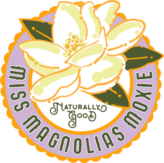Mountain Holly (Ilex aquifolium, Holly Family)
Common Name: European Holly
Medicinal Part: The Leaves
Description: Mountain holly is a tree with very glossy and wavy, spiny leaves, umbellate clusters of many flowers. The berries are bright red. Occasionally planted but not hardy. The I. Aquifolium L., or European Holly, is usually a shrub, but in some places attains the magnitude of a middling-sized tree. It is the most beautiful of all evergreens, but is unsuited to our climate, being too tender to withstand the winters in the Northern States and equally affected by the hot, dry summers in the Southern States.
Properties and Uses: Holly is little used in modern herbalism. The leaves are diaphoretic, expectorant, febrifuge, and tonic. They can be used fresh at almost any time of the year or can be harvested in late spring and dried for later use. They are used in the treatment of intermittent fevers, rheumatism, catarrh, pleurisy, etc. The juice of the fresh leaves has been successfully used in the treatment of jaundice. The berries are violently emetic and purgative. They have been used in the treatment of dropsy and as a powder, they have been used as an astringent to check bleeding. The berries are toxic, especially to children, and should not be used medicinally except under professional supervision. The root has been used as a diuretic, though there are more effective diuretics available. The plant is used in Bach flower remedies – the keywords for prescribing it are “Hatred”, “Envy”, “Jealousy” and “Suspicion”. (naturalmedicinalherbs.net)
Dose and Preparation: A tisane or decoction can be prepared from fresh or dried leaves to reduce the temperature of the body in a fever and when you have a cold, the tisane can help get rid of mucus and tisanes have been used as a diuretic. To make, soak holly leaves overnight in cold water, then boil them briefly, strain then drink the liquid. This also soothes coughs. If you have dried leaves then take 4 tsp. of crumbled dried leaves and boil in water for ten minutes, strain and drink. The recommended dose is one cup a day. This is good for fevers associated with flu and as a diuretic if you suffer from rheumatism or gout. For a purgative which is less violent than eating the berries, soak the bark of the holly tree in cold water overnight and take two cups a day after meals. If you put 2 tbsps dried bark on a pint of water and boil for ten minutes, this has a tranquilizing effect and calms hysteria. The leaves have been used as a tea substitute. The roasted fruit has been used as a coffee substitute. Some caution is advised here, since the fruit can be purgative and emetic.

